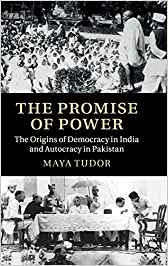Most comparisons of India and Pakistan are defined by which side of the border (or the Line of Control) you are standing on, and are often heavily rhetorically loaded: Pakistan as a failed army-state overrun by radicals and terrorists, India as a corrupt, unmanageable confederacy grappling with poverty and insurgencies. Yet one aspect of this rivalry is incontrovertible. Whereas India has had a practically unbroken rule by elected governments, Pakistan has only just witnessed its first civilian-to-civilian transfer of elected governments, and been ruled 33 out of 64 years by military dictators. In Bangladesh, carved out of Pakistan in 1971, 15 of the past 32 years have been under military rule.
Despite many studies, important questions remain about just what caused this divergence between the countries that were one country in 1947. Was it because the Indian freedom movement was much older than the idea of Pakistan? Did Pakistan’s ruling, landed elite prefer to control power, while India’s freedom movement was driven largely by middle class professionals? What role did the relationship between the Army and civil society play? And, was Jinnah’s decision to accept office as Governor-General, even as Gandhi abjured a position in the new government responsible for the different trajectories the two countries have taken?

